Weather, Lots of Visitors,
Moon on Dome, Moon, Saturn
Posted: 30 August 2023
After my last session on 9 August 2023, I did not open the observatory until Tuesday, 29 August, due to mostly weather conditions. This reports starts with some highlights of the weather during that period.
With Monsoon Season thunderstorms in the forecasts, late Thursday afternoon, 10 August 2023, I put the Dome Cover ON. Late Thursday night received 0.01" rain. Due to clouds, I missed out on the Perseids Meteor Shower. Over several nights, Asteroid 15 Eunomia was near the M22 globular cluster, but cloudy nights prevented imaging them together. Sunday afternoon, 13 August, a brief rainshower (0.004") occurred. Monday night, 14 August, another brief shower occurred (0.17"). Wednesday mid-day, 16 August, there was this storm to the northwest.
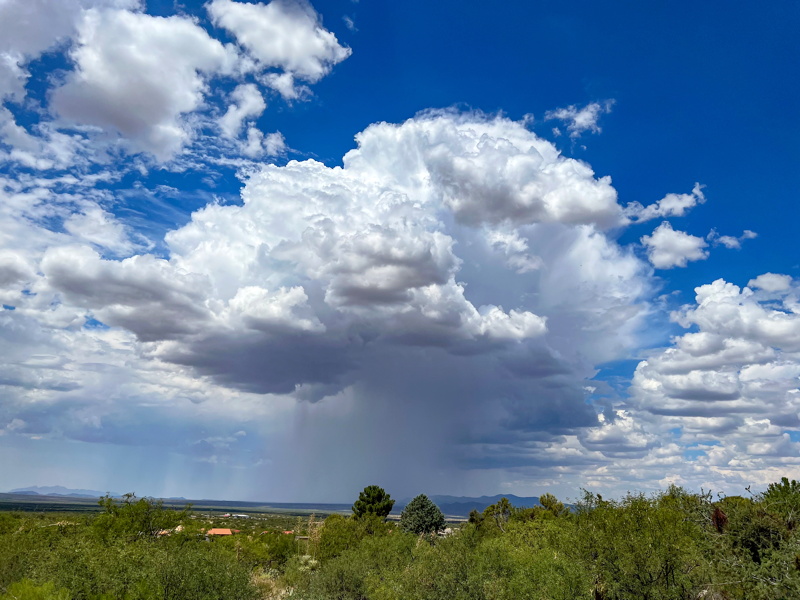
But no rain was received at Cassiopeia Observatory. Wednesday evening there was some nice lightning, but right after I went outside to take some photos, the storm fizzled out. Only got one photo.
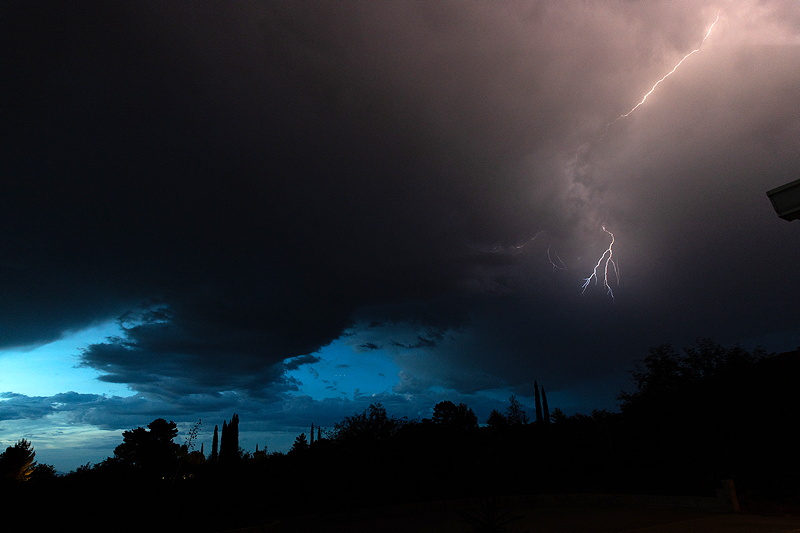
Thursday night, 17 August, had a thunderstorm (0.37").
Friday, 18 August, was the 14th anniversary of "First Light" at Cassiopeia Observatory. Enjoy this video of the "Making of Cassiopeia Observatory". Friday night there was a thunderstorm west of Oracle (no rain here) with some impressive lightning. Top photo is a single image; bottom photo is a merge of five photos.
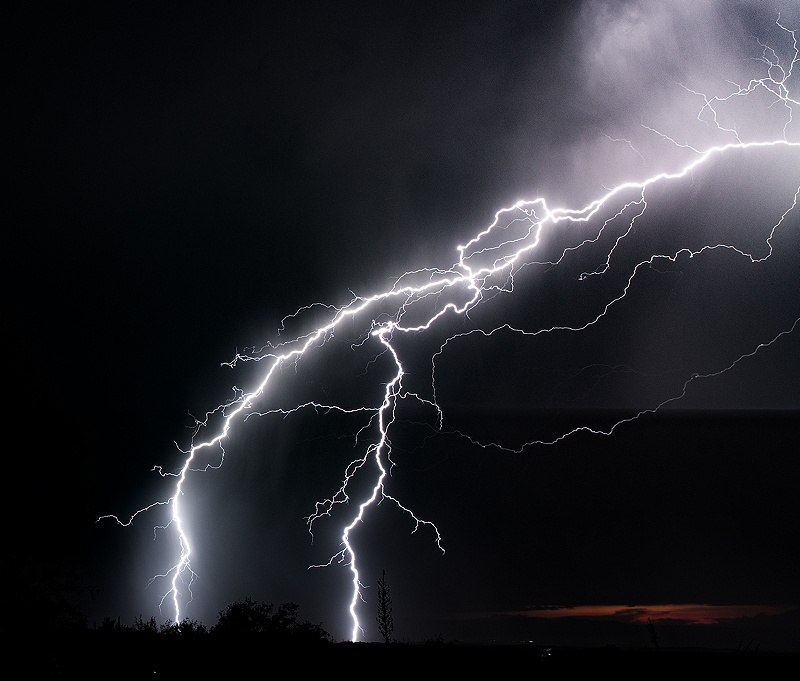
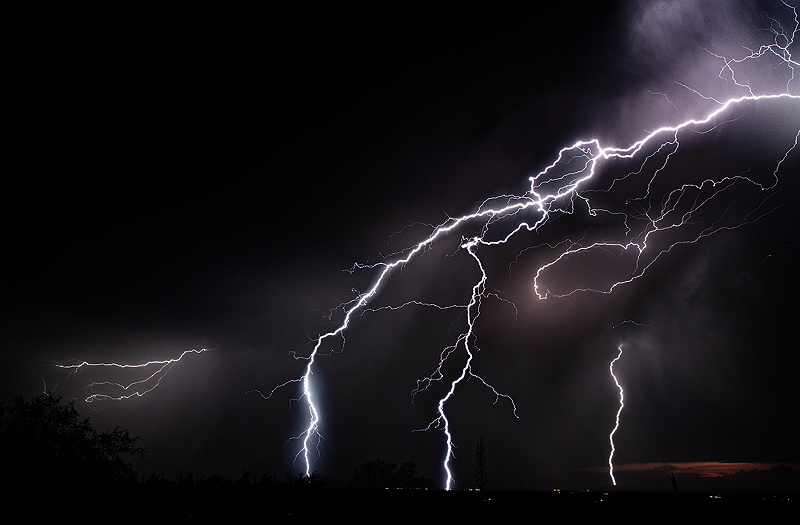
Click or tap on photos for larger versions
Saturday morning, 19 August, I saw this nice "Sun Halo" while riding my bicycle.
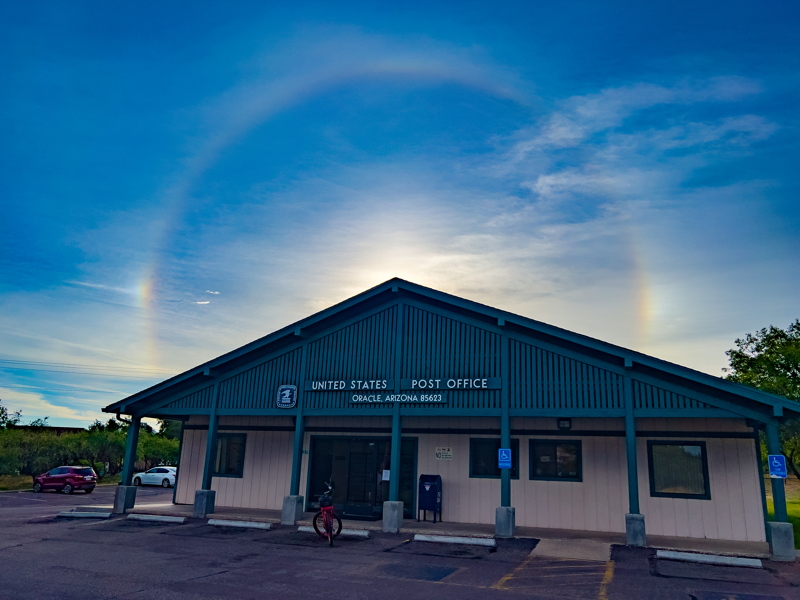
Clouds and moisture from what had been Pacific Hurricane Hilary arrived late Saturday, but no rain here. Remnants of Hilary finally arrived late Sunday night, 20 August, with 0.001" rain before midnight and 0.006" before sunrise on Monday. Midafternoon Monday, 21 August, had a brief thunderstorm (0.3") with lightning and continuous thunder, followed by some brief periods of rain. Total rain for Monday was 0.43". Late Tuesday afternoon, 22 August, another brief thunderstorm came through with some pea-sized hail and heavy rain (0.2"). View of the storm after it passed.
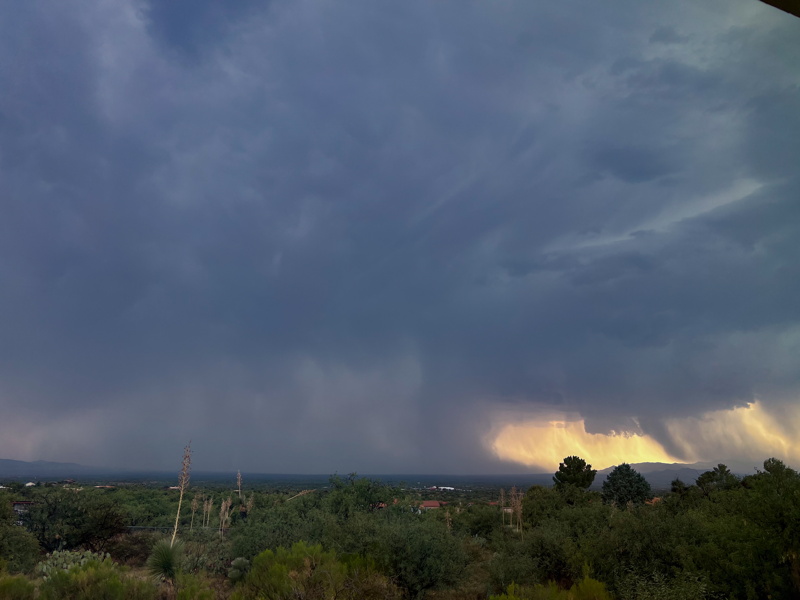
Here are three cropped frames from an iPhone 13 Pro Max video of a single lightning bolt from the storm.
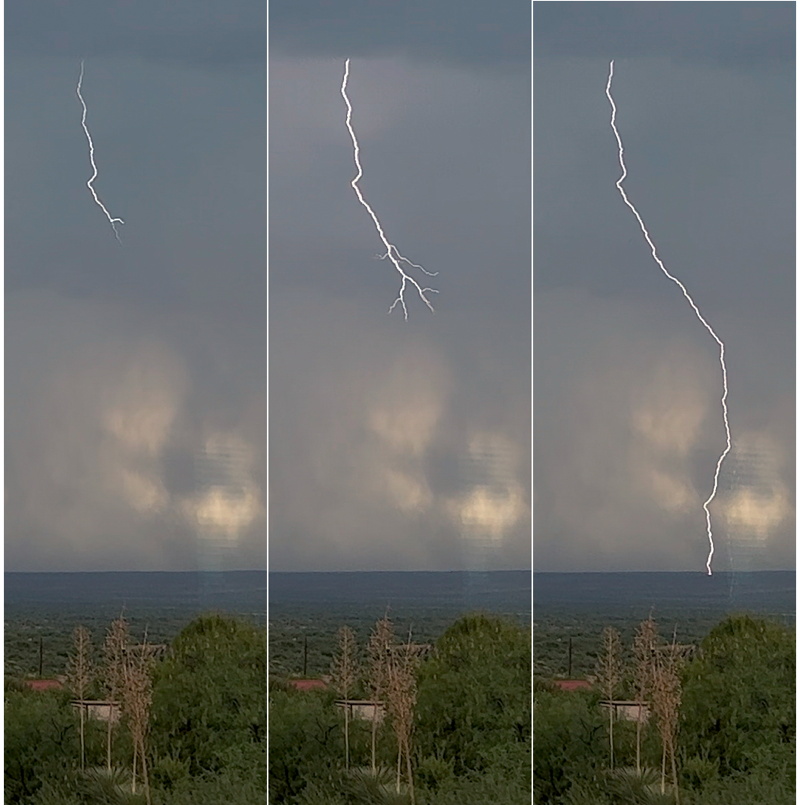
The remnants of Gulf of Mexico tropical storm Harold arrived on Wednesday, 23 August, but there was no rain here. Thursday night, 24 August, there was an occultation of Antares. The sky cleared as the time of the disappearance of Antares approached, but due to an early Friday morning commitment I did not open the observatory. I did observe the disappearance using 7x50 binoculars. Cloudy nights returned on Friday, 25 August. Had periods of brief rain (0.18") on Saturday, 26 August.
|
Open: Tuesday, 29 August 2023, 1817 MST Temperature: 89°F |
Session: 1917 Conditions: Mostly clear |
Equipment:
12" f/8 LX600 w/StarLock
2" 24mm UWA eyepiece
2" 30mm eyepiece
2" 9mm 100° eyepiece
Camera:
iPhone 13 Pro Max
I first removed the Dome Cover. I then SYNCed the observatory clock to WWV.
When I arrived at the observatory I noticed there were lots of these little bugs (3/16th inch). They were everywhere. I later learned that they are Pentatomid nymphs that probably just hatched.
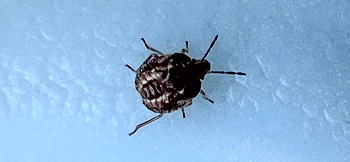
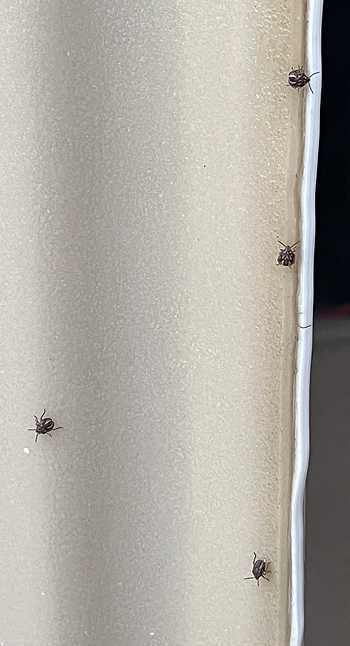
1840 MST: I relaxed on the observatory patio bench.
1852 MST: Sunset.
1932 MST: Southeastern sky brightening from the rising one day before Full Moon. The Moon was still behind the hill.
2000 MST: Back in the observatory. LX600 ON, StarLock OFF, High Precision OFF.
Viewed the globular clusters M22 and M4, 102X.
Then relaxed on the bench while waiting for the Moon to clear some tree limbs. Clouds were increasing.
2025 MST: Back at the 12" telescope. Viewed the Moon, 102X. A very slight terminator was visible.
2030 MST: Took this handheld iPhone 13 Pro Max photo of the Moon projected onto the observatory. The constellation of Cassiopeia is above the Cassiopeia Observatory dome. Taken with the Camera app (Night Mode, 3 seconds, 1X lens).

I then viewed the Moon, 81X and 271X.
Mounted the iPhone on the 2" 30mm eyepiece using the Accuview 3-Axis Smartphone Adapter. Took this afocal 81X image of the Moon using NightCap Camera (ISO 34, 1/11400sec, 1X lens).
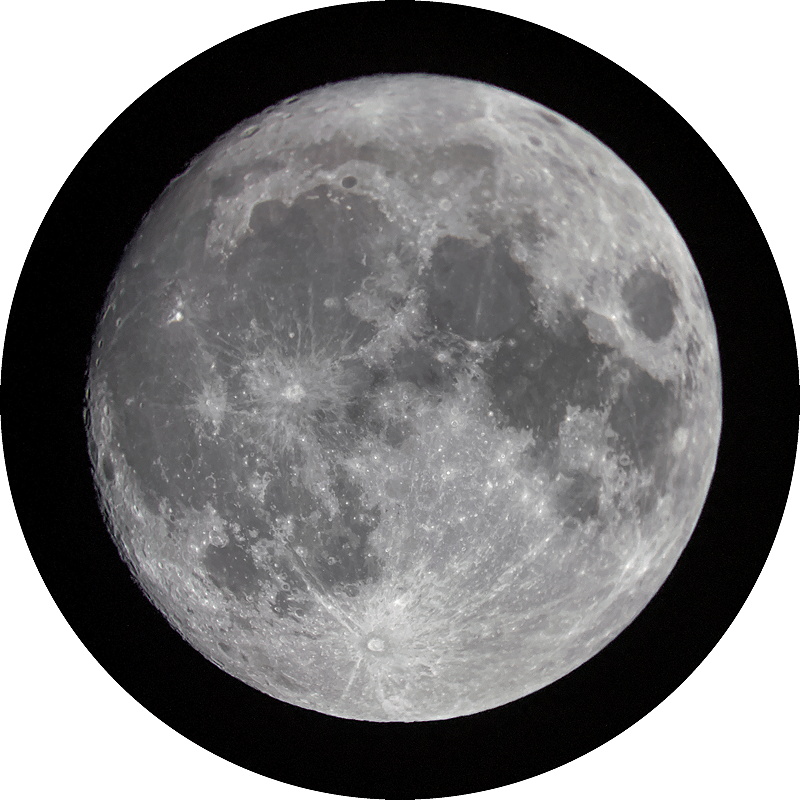
Mounted the iPhone on the 2" 9mm eyepiece using the Accuview adapter. This afocal 271X image of the northern terminator was taken using NightCap Camera (ISO 34, 1/1150sec, 1X lens).
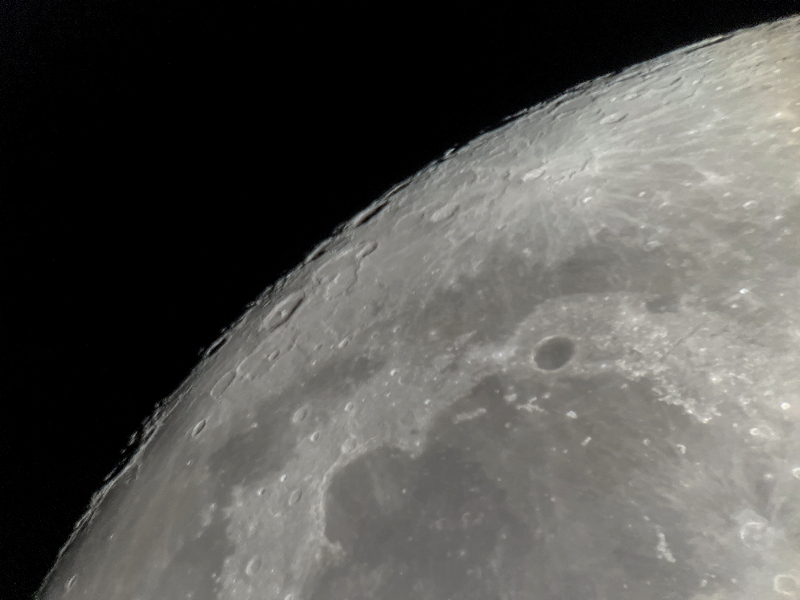
Slewed to Saturn. This afocal 271X image was taken using NightCap Camera (ISO 34, 1/15sec, 1X lens). It shows how Saturn appeared in the eyepiece.
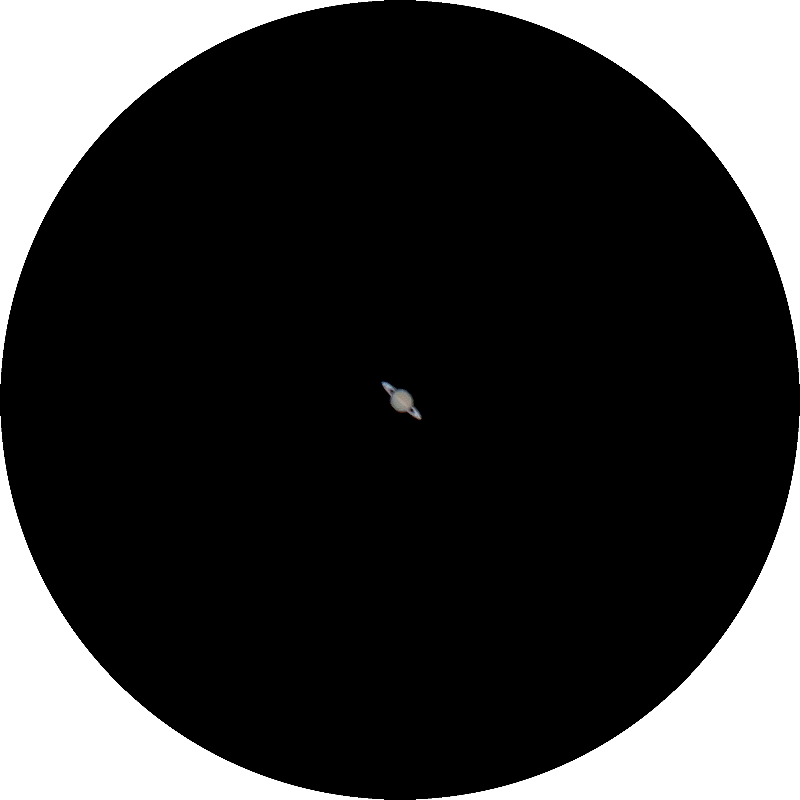
Lastly, with the sky now mostly cloudy, I viewed Saturn, 271X and 102X.
2102 MST: LX600 OFF.
2120 MST: As there are thunderstorms back in the forecasts, I put the Dome Cover ON.
|
Close: Tuesday, 29 August 2023, 2122 MST Temperature: 84°F |
Session Length: 3h 05m Conditions: Mostly cloudy |
On my previous session in Cassiopeia Observatory, 9 August, I completed the Herschel 400 Project that I began 18 October 2022. You can view all my images on the Herschel 400 Catalog Astrophotography Album. This chart shows NGC number range imaged each month.

Click to view larger image
I have reorganized the Cassiopeia Observatory Weather photo album. Check it out.
My review of The Barnard Objects: Then and Now has been posted. I have also added a new Astrophotography Album: Barnard Dark Nebula Astrophotography for my next Project.
Comments are welcome using Email. Please read the Email Etiquette guidance.
Cassiopeia Observatory Home Page
Copyright ©2023 Michael L. Weasner / mweasner@mac.com.
URL = http://www.weasner.com/co/Reports/2023/08/30/index.html
